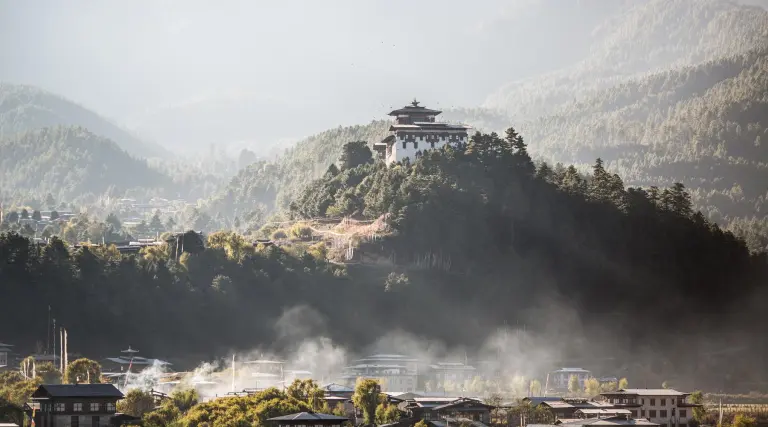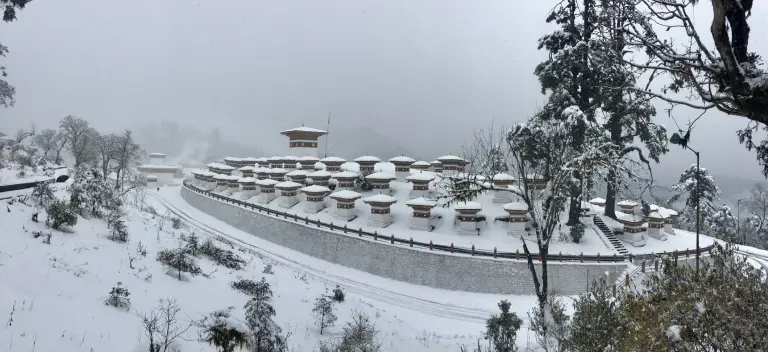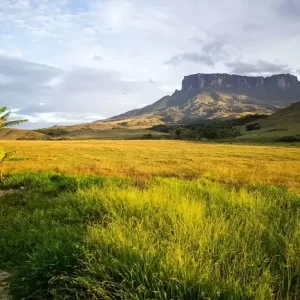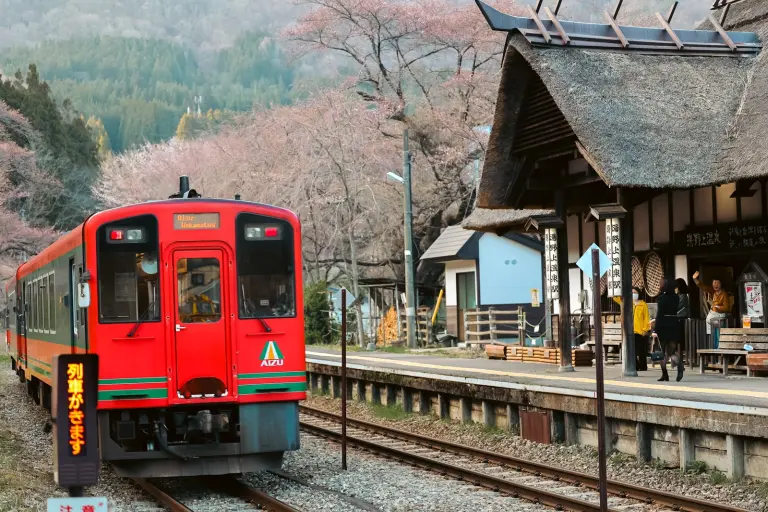The ideal seasons to explore Bhutan are generally spring (mid-March to May) and autumn (September to November). During these months, the country’s pristine landscapes reveal themselves under pleasant, dry, and mild weather — perfect for sightseeing and outdoor adventures.
With its diverse topography — from towering snow-capped peaks and deep glacial valleys to lush subtropical forests — Bhutan’s climate varies widely across regions. Most locals reside in Central Bhutan, where dense forests thrive and the weather stays relatively consistent year-round, with cool summers and mild winters.
Rainfall, like temperature and humidity, depends heavily on altitude. The far north sees an average of only about 40 mm of precipitation annually, most of which falls as snow.

>> Traveling to Bhutan: What you need to know
Bhutan’s Four Distinct Seasons
Bhutan experiences all four seasons, shaped significantly by the annual monsoon winds sweeping in from India, usually overlapping with summer and early autumn.
Winter (November to early March) brings heavy snowfall to areas above 3,000 m, with frost blanketing the country. Fierce winds roar through the high mountains, giving Bhutan its nickname — Land of the Thunder Dragon. Remote villages, temples, and monasteries may become isolated, while roads, particularly in the east, can be challenging to navigate.
In contrast, the central highlands further south enjoy much warmer conditions, making them excellent for trekking. Still, despite sunny days, winter temperatures can dip well below freezing. In Paro, for example, January lows can reach –6 °C, whereas the south and east remain noticeably warmer.
Spring (early March to mid-April) is relatively short but breathtaking. Light showers, gentle temperatures, and melting snow give way to carpets of wildflowers across the hillsides. Both humidity and rainfall drop, creating ideal travel conditions. This is also when crystal-clear skies reveal sweeping Himalayan vistas, drawing large numbers of visitors.
Summer (mid-April to mid-September) starts warm but quickly turns wet from late June onward due to the monsoon. The high humidity increases the risk of flooding, particularly in rural areas, disrupting road travel and domestic flights. Even so, northern areas can still get chilly at night.
By autumn (late September to early October), the rains ease, and Bhutan welcomes a second wave of travelers — many hoping to witness the first snowfall of the season amid dramatic mountain scenery.

>> What to know before visiting Bhutan – Dos & Don’ts
Practical Tips for Each Season
Winter tourism remains possible thanks to well-prepared accommodations, where electric heaters and thick blankets are standard. If traveling between spring and late autumn, it’s wise to pack a light jacket and waterproof shoes to stay comfortable during cool evenings or unexpected showers.
Ultimately, visiting Bhutan is as much about immersing yourself in its rich cultural tapestry as it is about experiencing its varied climate. Each season offers something unique — whether it’s wildflower-covered hills, crisp snowy mornings, or golden autumn valleys. Hopefully, this guide helps you choose the perfect time for your long-awaited Bhutan journey.







